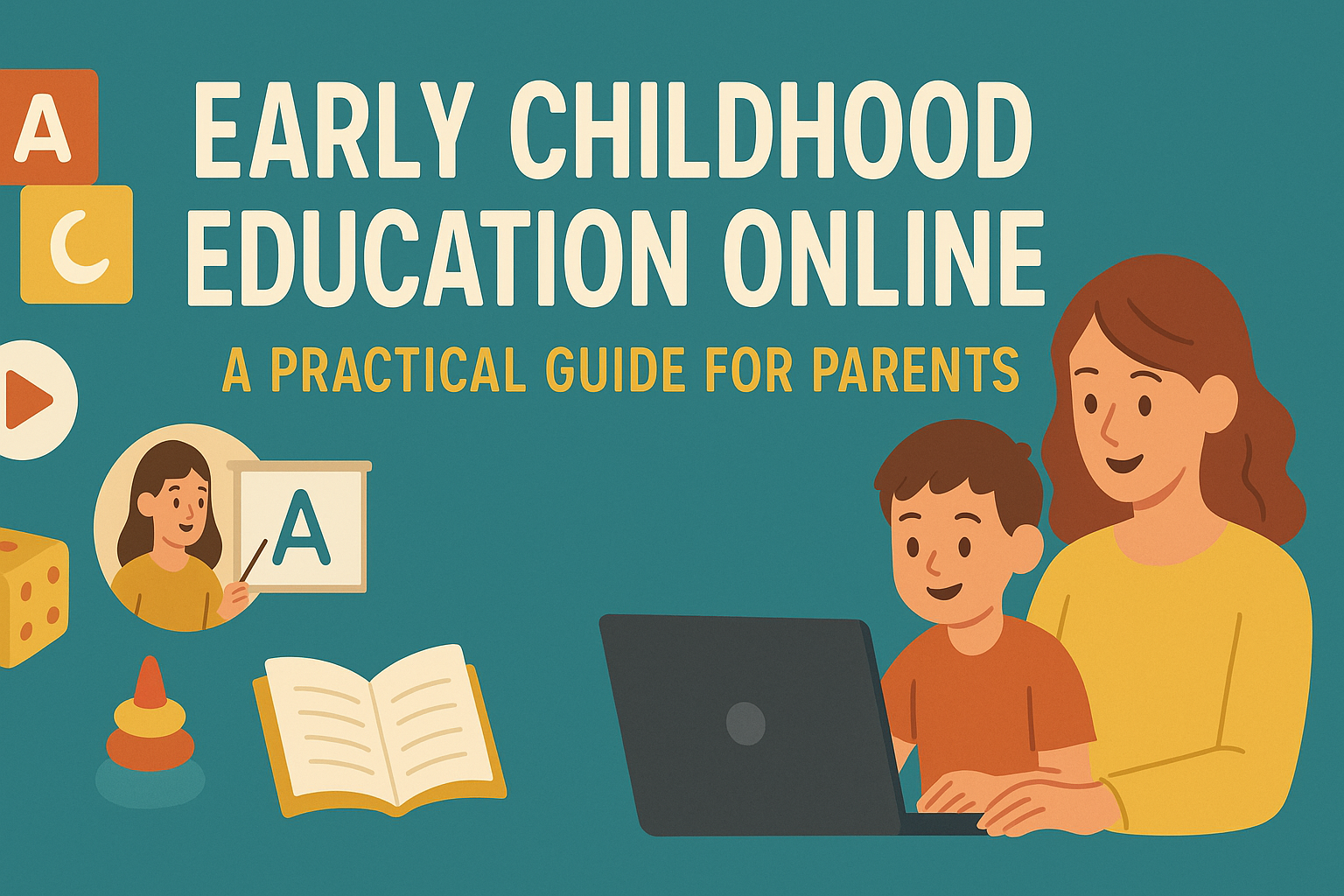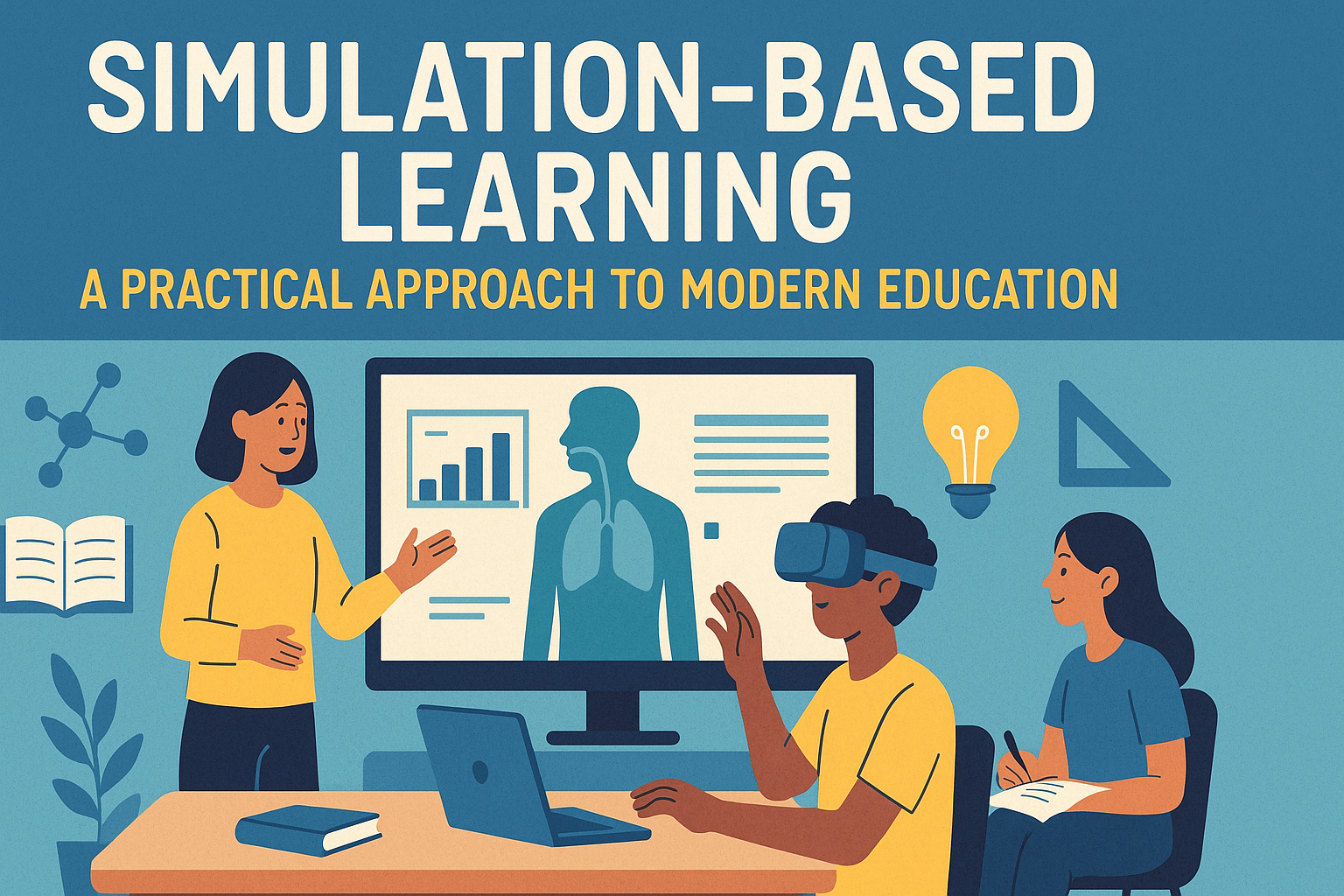Early Childhood Education Online: A Practical Guide for Parents

What Is Early Childhood Education Online? Early childhood education online is growing fast. More parents are using digital tools to teach kids under age five. These programs cover basic skills like reading, math, and social behavior. They offer a flexible way to learn at home.
Why Early Childhood Education Online Matters
Many families now need options that work around their schedule. Online learning gives them control over when and how lessons happen. It also helps kids get used to technology early. This can make school easier later on. Some kids live in areas where preschools are far away. Others have health concerns orare busy parents. Online learning meets these needs with low cost and high access. It makes early education possible for more kids.
Types of Online Early Childhood Programs
There are many types of online ECE programs. Some are fully video-based. Others use interactive games or printable worksheets. Some combine live classes with self-paced work. Most platforms let kids move at their own speed. This helps them stay engaged and not feel rushed. Some apps adjust lessons based on how well a child does. That keeps things challenging but not too hard. Parents can choose between parent-led or child-led formats. Some programs need adult help. Others are built for kids to use alone. Pick one that fits your time and your child’s style.
Benefits of Early Childhood Education Online
Online learning gives families more freedom. You can start lessons anytime and take breaks as needed. There’s no commute or strict schedule to follow. Digital programs often give instant feedback. Kids see what they did right or wrong right away. That helps them learn faster and remember better. These tools also track progress over time. Parents can see which skills a child has mastered. That makes it easy to spot where extra help might be needed.
Cost is another big benefit. Online programs are usually cheaper than in-person schools. You save money on transport, meals, and other fees. They also support different learning styles. Some kids do better with visuals. Others learn by doing. Digital tools offer both and more.
Challenges of Early Childhood Education Online
Too much screen time is a real concern. Young kids should spend limited time on devices. Experts suggest no more than one hour per day for ages 2–5. Kids may miss out on group play and face-to-face talk. These are key parts of early development. Social skills grow through shared activities and conversations. Young learners still need guidance. Most online programs require some adult help. This can be tough for busy parents.
Read More » How to Find and Apply for Coles Jobs – A Simple, Clear Guide
Not all programs are high quality. Some lack structure or fail to teach core skills. Always check reviews and look for trusted names. Tech issues can cause problems. Slow internet or old devices can stop lessons. Make sure your setup works before starting a program.
How to Choose the Right Program
Check if the program matches your child’s age. Lessons for a 3-year-old should be simple and fun. Older kids can handle more complex tasks. Look for programs with clear goals. Good ones teach specific skills like counting or letter sounds. Avoid vague or unclear content. See if the app or website holds attention. If a child gets bored, learning stops. Try a free trial before you pay.
Ask if there’s a way to track progress. Good programs show what a child has learned. This helps parents know if things are working. Make sure it runs well on your device. Test it on your phone, tablet, or computer first. Don’t buy something that won’t load properly. Read reviews from other parents. Real user feedback shows what to expect. Look for consistent praise or common complaints.

Blending Online Learning with Offline Activities
Online lessons should not replace hands-on play. Use toys, books, and art supplies to build real-world skills. Balance screen time with physical activity. Take learning outside after a lesson. Talk about shapes while walking or count steps together. Nature supports brain growth and curiosity. Use music and movement breaks during learning. Dance, stretch, or sing songs between lessons. This helps kids focus and stay healthy.
Set up daily routines that mix online and offline work. For example: read a story, watch a matching video, then draw a picture. This builds strong habits. Include storytelling and reading aloud. Apps are helpful, but nothing replaces a parent’s voice. Read together every day to build language skills. Talk to your child about what they learned. Ask questions and listen to their answers. This boosts memory and understanding.
Supporting Your Child During Online Learning
Create a quiet space for learning. Keep distractions like TV or phones away. This helps kids focus and stay calm. Set a regular time for lessons. Kids thrive on routine. A set schedule makes learning feel normal and expected. Stay nearby during lessons. Offer help when needed. Encourage effort, not just results.
Celebrate small wins. Praise your child when they try something new. Positive feedback builds confidence and motivation. Review lessons together. Talk about what was learned and ask follow-up questions. This reinforces new ideas. Keep an eye on mood and energy. If your child seems tired or frustrated, take a break. Learning should feel fun, not stressful.
Conclusion: The Future of Early Childhood Education Online
Online early education is here to stay. It offers flexibility, variety, and cost savings. More parents are choosing this path each year. The best programs combine tech with real-life learning. They keep kids engaged without too much screen time. They also teach core skills effectively.
Read More » Trade Me Jobs: What It Is and Why People Use It
As digital tools improve, so will online learning. New apps and features will make lessons even better. But success always depends on good choices and active parents. Choose wisely. Use trusted sources. Support your child’s learning journey with care.
Frequently Asked Questions (FAQ)
Q1: At what age can kids start online early education?
Most programs are made for kids ages 2 to 6. Some offer content for toddlers as young as 18 months. Check the recommended age before signing up.
Q2: Are online programs effective for young kids?
Yes, if they are well-made and age-appropriate. Good programs use visuals, interaction, and repetition. Parent support also plays a big role.
Q3: How much screen time is safe?
Experts say no more than one hour per day for kids under 5. Always balance screen time with outdoor play and family time.
Q4: Can online learning replace preschool?
It can supplement it. But full-time online learning may miss social and emotional growth. In-person playdates or part-time classes can help.
Q5: What tech do I need?
You’ll need a stable internet connection and a device like a tablet or laptop. Some apps work on smartphones too. Make sure your device is updated.
Q6: How do I know if my child is learning?
Look for new words, better focus, and improved problem-solving. Most apps show progress reports. You can also ask your child simple questions about what they learned.

